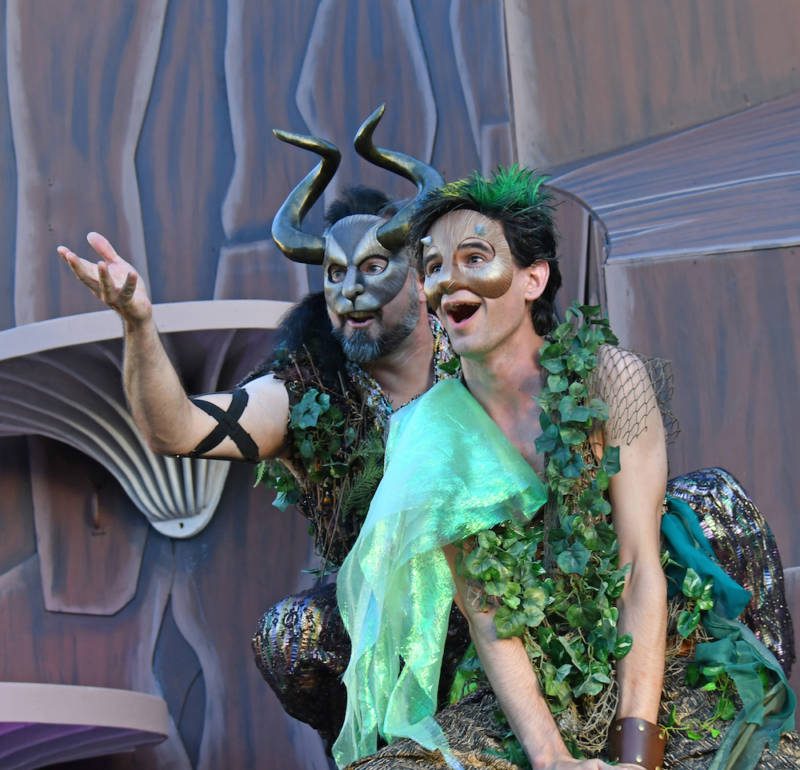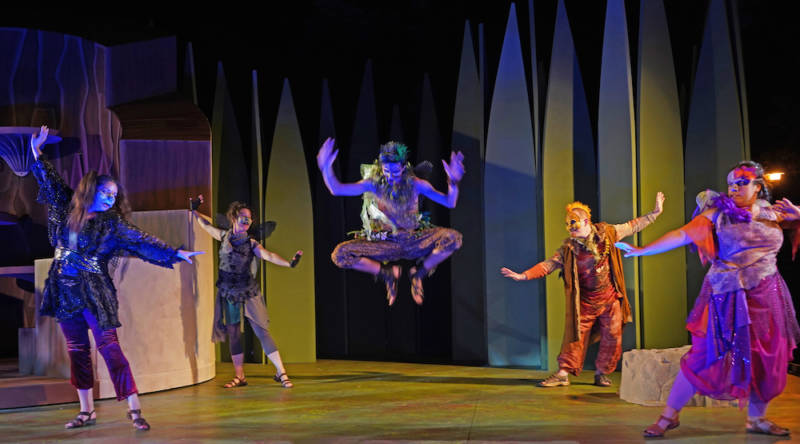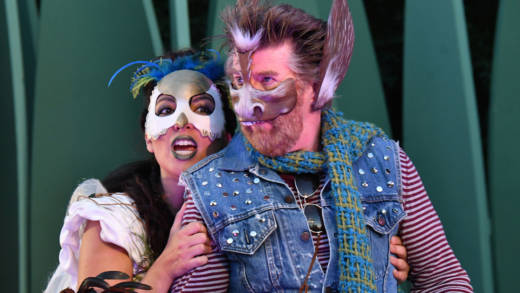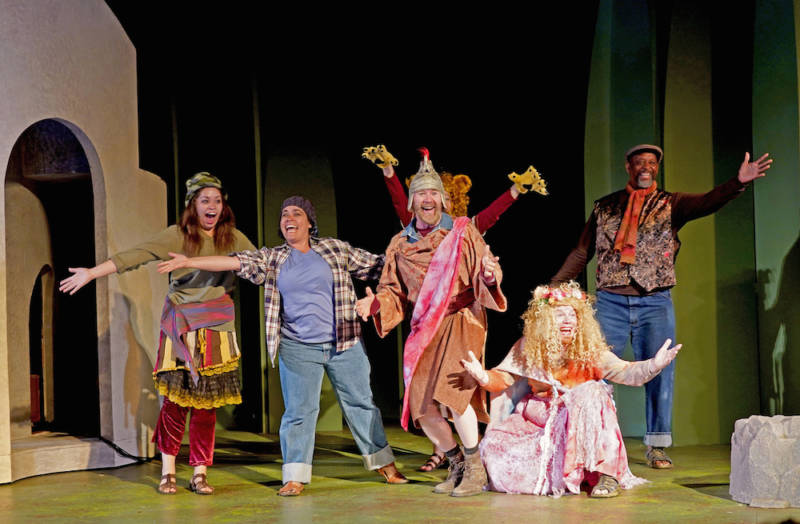The magic doesn’t really begin at SF Shakes’ production of A Midsummer Night’s Dream until the staged rise of an enormous crescent moon, above the festival’s most inventive set piece, designed by Neal Ormond: a massive, hollowed-out tree trunk fitted with charming “mushroom” platforms for the play’s fairies to gambol and sleep upon.
It’s when the fairies enter, in a blur of sequins and chatter, that the play settles into itself. With their presence, they signal its fantastical core, a realm where disbelief must be willingly suspended. It’s a realm where Amazons wed, lovers’ messy quadrangles become sport for mischief-makers, and a loud blowhard might become a literal ass.

Here is “proud Titania” (Livia Gomes Demarchi) and her overbearing consort Oberon (Stephen Muterspaugh) arguing over the fate of a changeling boy in her charge. Here is the impish Puck (a long-limbed, green-haired James Lewis) and a cacophony of fairy folk to accompany the proceedings and score it with their drums. There is little nuance in the action. The outdoor setting, the multi-generational audience, the still-persistent light of the sun (Free Shakespeare in the Park’s evening shows start at 7pm this year) all demand a less-than-light touch by the performers onstage, even when inhabiting the characters of woodland sprites.
The works of William Shakespeare mean many things to different people, but love them or hate them, it’s hard to argue with their staying power. And while seeing them in the pomp and grandeur of a well-appointed theater can be a rich sensory experience, to see them outdoors in the company of anyone who can afford the price of “free” is an experience more akin to Shakespeare’s Elizabethan times, where theater was often performed in low-cost public houses and served as entertainment for audiences far more diverse than just the monied elite.

A Midsummer Night’s Dream is a perfect example of this kind of multi-purpose, populist comedy: allusion to ancient mythology (the central human characters include Athenian hero Theseus and the Amazon Queen Hippolyta, played respectively by Muterspaugh and Demarchi), roles for musicians and acrobats, moments of lewd “low” humor, and a willingness to not let finer plot points stand in the way of a mostly happy ending.




